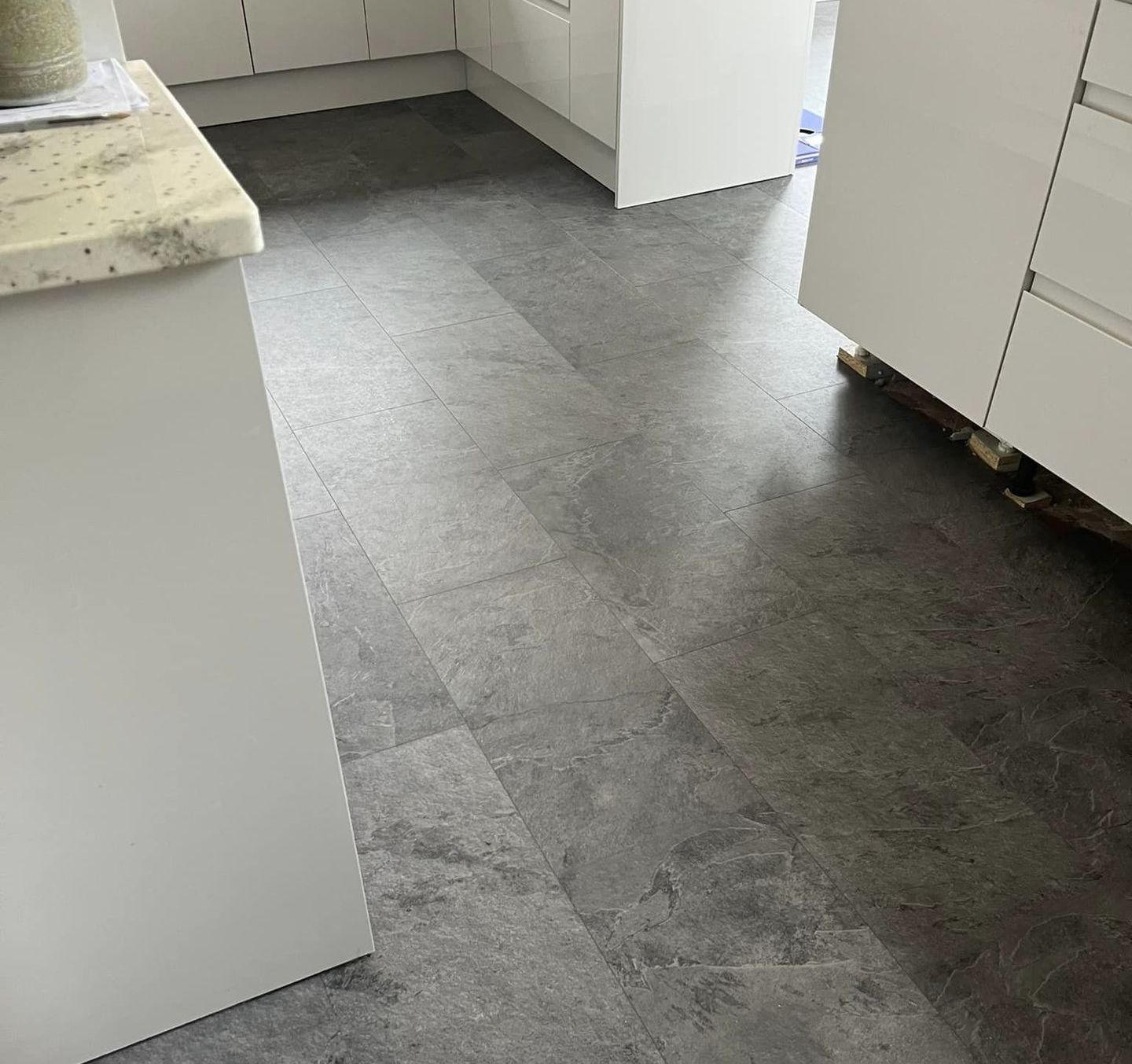Laminate vs. Vinyl Flooring – Which is better?
As two of our most popular products, it’s no wonder people often ask us about the differences between laminate vs. vinyl flooring. Here, we outline the pros and cons of each, and describe what makes each one unique, to help you weigh up laminate vs. vinyl for your own home.
Laminate Flooring
This is a hybrid type of material invented by Swedish firm Perstorp back in 1977, comprising of a particleboard base topped by a photographic layer and a clear wear layer.
The Advantages of Laminate Flooring
Laminate could be the ideal choice if you love the look and feel of real wood but need a more functional alternative. It’s hardwearing and easy to fit and care for. So it’s a great all-rounder that will go well in most rooms, including the busiest areas of your home. And you can clean this surface easily, too.
What’s more, it’s a budget-friendly choice without compromising on style, while it’s also available in an array of colours, thicknesses and finishes.
The Disadvantages of Laminate Floors
Laminate goes best in living and dining areas, hallways, bedrooms and other areas where prolonged excessive moisture is not a problem. (Liquids can swell or damage this product.) In contrast, you can fit vinyl just about anywhere.
You need to be careful when moving furniture across laminate, since it can be vulnerable to scratching, which can also happen in high-traffic areas.
Finally, over time too much exposure to direct sunlight can make laminate floors fade, particularly in rooms with sliding doors or large windows.

|
Advantages |
Disadvantages |
|
Functional alternative to real wood Hardwearing Easy to fit Minimal upkeep Suitable for most rooms Easy to clean Budget-friendly Stylish |
Liquids can swell or damage Vulnerable to scratching May fade in sunlight |
Vinyl Flooring
This comprises of a number of different layers of varied materials which are sandwiched together. The result is a hardwearing, functional and cost-effective floor covering. There are two main types – Luxury Vinyl Tiles (LVT) and vinyl roll. Although both incorporate identical materials, the different construction methods produce different effects.
The Advantages of Vinyl Flooring
These include this material being quiet and comfortable underfoot, with good resistance to damp and damage. Vinyl is also easy to fit, and affordable, while upkeep is minimal.
The Disadvantages of Vinyl Floors
New technologies mean vinyl continues to develop in terms of its design and construction. So the following downsides may no longer apply. However, if you’re looking at vinyl vs. laminate flooring, the former can be hard to remove when glued down. And if you place weighty objects on it, dents can occur, while sharp items can puncture it. It’s better placed outside areas of exposure to direct sunlight, while excessive temperatures can damage it.

|
Advantages |
Disadvantages |
|
Quiet Comfortable Good resistance to damp and damage Easy to fit Affordable Minimal upkeep |
Hard to remove when glued down May dent or puncture May fade or discolour in sunlight Excessive heat may damage |
Which is better vinyl or laminate flooring?
Both are easy to install and affordable (there’s not a huge amount to choose between the two in terms of price, although sheet vinyl is often more cost-effective), so it could seem that they differ only in name.
Yet there are key differences in terms of what they are made from – laminate’s core is made from wood by-products bonded with resin, while vinyl is 100% synthetic – and, when you look more closely, appearance.
Laminate can often look more realistic in terms of portraying a natural material but, with vinyl, LVP gives the most genuine look.
Additionally, neither material resists heat particularly well. But when it comes to moisture resistance, vinyl wins every time, since it’s waterproof. It’s also the easier of the two to clean easily and thoroughly. If it’s in decent nick, just give it a once-over with a wet mop and, if required, scrub with standard cleaning products.
Vinyl is typically more durable than its laminate counterpart, so it’s often used in commercial settings, or in homes with pets. And thin vinyl generally lasts longer than thicker versions.
However, as long as laminate is kept dry and clean, its lifespan can be similar to vinyl’s.
Both materials enjoy similar ease of installation, though vinyl needs fewer tools and you have to know what you’re doing a little more when fitting laminate, to be accurate. But both can be fitted with the ‘click-and-lock’ method.
As for environmental impact, here laminate may just have the edge, due to its core’s natural timber content.
The areas where there are further similarities between these surfaces include:
Both are comfortable
Both will enhance the value of a property
Both shrug off stains well
So is one better than the other?
That’s a hard call, since so much depends on what you need the flooring for, where in your home it will go, and your priorities. Vinyl is certainly your best bet for ‘wet’ areas, while laminate can often look slightly better and offers more style choices.
Meanwhile, vinyl recreates the look of stone or tile without the expense, offers plentiful colours and patterns, and has a slightly cushioned feeling underfoot, being slightly softer. Equally, it doesn’t need underlay.
Here to Help: Creative Wood Floors
So there’s no right or wrong answer. At Creative Wood Floors, we can help you choose the best material for your circumstances and project, budget and property. Our range includes everything from hardwearing luxury vinyl to sought-after laminate brands.
Give us a call, contact us online or visit our Basingstoke showroom for advice. We’re open 9am to 5pm during the week, and on Saturday mornings.
















